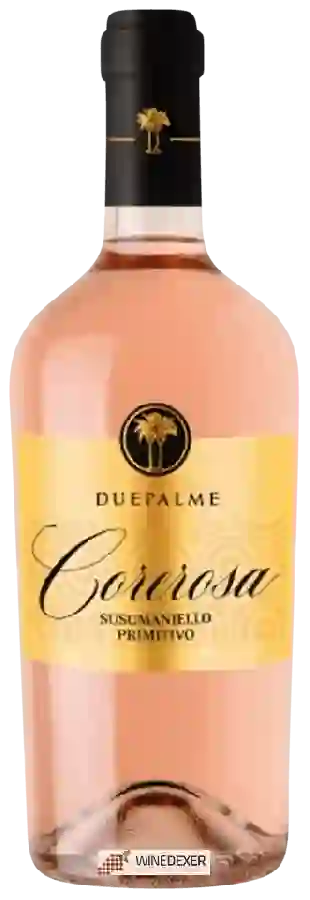
Winery Cantine due PalmeCorerosa Rosato
This wine is a blend of 2 varietals which are the Primitivo and the Susumaniello.
In the mouth this pink wine is a powerful with a nice freshness.
This wine generally goes well with vegetarian, appetizers and snacks or beef.
Taste structure of the Corerosa Rosato from the Winery Cantine due Palme
Light | Bold | |
Dry | Sweet | |
Soft | Acidic |
In the mouth the Corerosa Rosato of Winery Cantine due Palme in the region of Puglia is a powerful with a nice freshness.
Food and wine pairings with Corerosa Rosato
Pairings that work perfectly with Corerosa Rosato
Original food and wine pairings with Corerosa Rosato
The Corerosa Rosato of Winery Cantine due Palme matches generally quite well with dishes of shellfish, rich fish (salmon, tuna etc) or appetizers and snacks such as recipes of tagliatelle with scallops, pasta with tuna and tomato or lili's gressins.
Details and technical informations about Winery Cantine due Palme's Corerosa Rosato.
Discover the grape variety: Primitivo
From Croatia where it is called crljenak kastelanski or pribidrag. According to genetic analyses carried out by Professor Carole Meredith of California University in Davis (United States), it is related to the Croatian plavac mali and Zinfandel. It is also found in South Africa, New Zealand, Chile, Brazil, Germany, Bulgaria, Albania, Italy under the name of Primitivo, Malta, Greece, Portugal and to some extent in Croatia. In the United States (California), it is one of the most widely planted grape varieties, having been introduced in the 1830s well before Primitivo. In France, it is registered in the official catalogue of vine varieties on the A1 list under the name Primitivo.
Last vintages of this wine
The best vintages of Corerosa Rosato from Winery Cantine due Palme are 2019, 0
Informations about the Winery Cantine due Palme
The Winery Cantine due Palme is one of of the world's great estates. It offers 224 wines for sale in the of Salento to come and discover on site or to buy online.
The wine region of Salento
The wine region of Salento is located in the region of Pouilles of Italy. We currently count 851 estates and châteaux in the of Salento, producing 2704 different wines in conventional, organic and biodynamic agriculture. The wines of Salento go well with generally quite well with dishes .
The wine region of Puglia
Puglia (Apulia to many English speakers) is a Long, slender wine region in the extreme Southeast corner of Italy's "boot". To use the shoe analogy often used to illustrate the shape of Italy, Apulia extends from the tip of the heel to the mid-calf, where the spur of the Gargano Peninsula juts out into the Adriatic Sea. The heel (the Salento peninsula) occupies the southern half of the region and is of great importance for the identity of Puglia. Not only are there cultural and geographical differences from Northern Puglia, but the wines are also different.
The word of the wine: Saignée (rosé de)
Rosé wine made from a vat of black grapes after a short maceration period.














